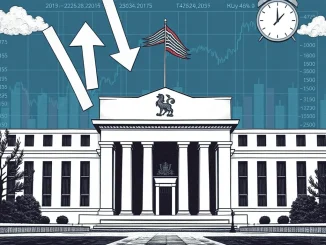
A significant voice in the crypto banking sector, Custodia Bank CEO Caitlin Long, recently raised serious concerns about the U.S. Federal Reserve’s approach to stablecoin regulation. Her pointed criticism highlights a perceived bias that could hinder innovation and competition, particularly favoring large, established financial institutions.
Understanding the Fed Stablecoin Policy Controversy
On April 28, Caitlin Long took to X (formerly Twitter) to dissect the nuances of the Federal Reserve’s current stance on cryptocurrency activities for banks. While acknowledging that the Fed had rescinded four previous crypto-related guidelines, Long emphasized a critical point: a statement from January 2023 remains in effect.
This standing policy presents two major restrictions for banks:
- It prevents them from directly holding or engaging with crypto assets on their balance sheets.
- Crucially, it prohibits banks from issuing stablecoins on permissionless blockchains, the very foundation of decentralized finance and many innovative crypto projects.
Long argues that maintaining this specific restriction effectively stifles competition and innovation in the stablecoin space, directing potential activity towards entities or structures favored by the existing regulatory framework.
Why Stablecoins Big Banks Might Be Favored
The core of Long’s criticism centers on the implication that the Fed’s policy structure inadvertently, or perhaps intentionally, creates an uneven playing field. By barring banks from issuing stablecoins on permissionless blockchains, the policy seems to limit the types of stablecoin models that regulated institutions can participate in. This could potentially steer stablecoin issuance towards models more aligned with traditional finance or those issued by institutions with significant existing infrastructure and relationships with regulators – i.e., the big banks.
This situation creates a paradox: while the Fed might express caution about the risks associated with crypto, its current policy, according to Long, appears to channel stablecoin activity away from potentially regulated and compliant entities like Custodia Bank, towards less clear avenues or concentrating power within the largest financial players.
The Urgent Need for US Stablecoin Regulation
Caitlin Long firmly believes that the current impasse cannot be resolved by regulatory interpretation or tweaks to existing guidelines. She contends that only the passage of comprehensive federal stablecoin legislation can provide the necessary clarity and legal framework to alter the Fed’s restrictive position.
This call for legislative action echoes sentiments from other pro-crypto voices in Washington. For instance, U.S. Senator Cynthia Lummis had previously voiced criticism regarding the Fed’s requirements for banks to report crypto-related activities, labeling such measures as merely “lip service” without substantive progress or clear rules for engagement.
The push for federal legislation aims to create a clear, nationwide standard for stablecoin issuance and regulation, potentially allowing a broader range of regulated entities, including crypto-native banks like Custodia, to participate and innovate on a level playing field.
Insights from Caitlin Long and Custodia Bank CEO
Caitlin Long, as the founder and Custodia Bank CEO, has been a vocal advocate for regulatory clarity and fair treatment of crypto-focused institutions within the traditional financial system. Custodia Bank itself was established with the goal of serving the digital asset industry under a regulated framework, making Long’s perspective particularly relevant to the challenges faced by entities attempting to bridge the gap between crypto and traditional banking.
Her recent comments underscore the ongoing tension between financial innovation and existing regulatory structures in the United States. The debate isn’t just about stablecoins as a technology, but about who gets to issue them, under what rules, and whether policies inadvertently create monopolies or disadvantages for new market entrants.
Conclusion
Caitlin Long’s criticism of the Fed’s stablecoin policy highlights a significant point of contention in the evolving landscape of US stablecoin regulation. By maintaining restrictions that appear to favor stablecoins big banks might issue while limiting participation on permissionless blockchains, the current framework faces accusations of stifling innovation and competition. According to the Custodia Bank CEO, the path forward requires decisive action from Congress through federal legislation, rather than relying on existing regulatory bodies to adapt policies that currently seem biased. This ongoing debate is crucial for determining the future structure and accessibility of stablecoin markets in the U.S.



